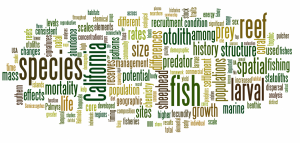
Word Cloud generated from the most commonly used words in Dr. Hamilton's article titles and abstracts.
Dr. Scott Hamilton’s lab focuses on studying a variety of issues regarding the ecology of fishes and marine communities. Our work currently focuses on nearshore fishes ranging from local kelp forests to remote Pacific coral reefs.
Climate Change Research
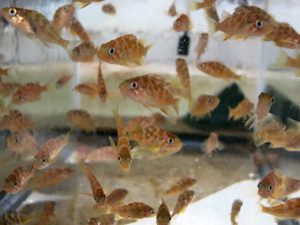 Currently, a focus of our lab is studying the effects of climate change on the behavior and physiology of kelp forest organisms. Two major projects are associated with this goal: one is studying the associated effects of climate change on rockfishes, and the other is examining the effects of ocean acidification on benthic communities in temperate reefs. Much of the research is focused on the effects of multiple stressors related to climate change, including ocean acidification (low pH or high CO2) and hypoxia (low dissolved oxygen). Often changes in pH and dissolved oxygen levels are highly correlated on the West Coast and organisms are likely to see fluctuations in both variables simultaneously. We have been focusing on the effects of these stressors on the vulnerable stages of rockfish development, particularly newly-settled juveniles (funded by a recent NSF grant) and larval development and reproduction.
Currently, a focus of our lab is studying the effects of climate change on the behavior and physiology of kelp forest organisms. Two major projects are associated with this goal: one is studying the associated effects of climate change on rockfishes, and the other is examining the effects of ocean acidification on benthic communities in temperate reefs. Much of the research is focused on the effects of multiple stressors related to climate change, including ocean acidification (low pH or high CO2) and hypoxia (low dissolved oxygen). Often changes in pH and dissolved oxygen levels are highly correlated on the West Coast and organisms are likely to see fluctuations in both variables simultaneously. We have been focusing on the effects of these stressors on the vulnerable stages of rockfish development, particularly newly-settled juveniles (funded by a recent NSF grant) and larval development and reproduction.
Click here to learn more!
Effects of Fishing on Sex-Changing Fishes
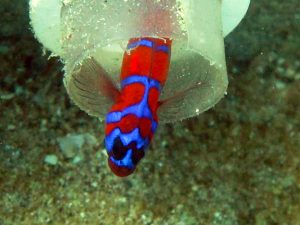 Dr. Hamilton was recently awarded an NSF grant with collaborators Mark Steele (CSU – Northridge), Mia Adreani (CSU – Northridge) and Will White (University of North Carolina – Wilmington) to study how a species' sexual pattern (specifically sequential and simultaneous hermaphrodites) influences its demographic response to size-selective mortality. Many important targeted fish, such as California sheephead (Semicossyphus pulcher), change sex throughout their lifetime. California sheephead (Semicossyphus pulcher), for example, change from females to males as they grow older. As such, the individuals targeted by fisherman are predominately male (assuming most fisheries target the largest individuals). This size-selective fishing pressure tends to skew the sex ratio of populations which oftentimes reduces the overall reproductive output. Little is known about the impacts of selective-mortality on the reproductive potential of populations of fishes that utilize different reproductive strategies, and this study, initiated summer 2015, seeks to explore this previously understudied consequence of fishing.
Dr. Hamilton was recently awarded an NSF grant with collaborators Mark Steele (CSU – Northridge), Mia Adreani (CSU – Northridge) and Will White (University of North Carolina – Wilmington) to study how a species' sexual pattern (specifically sequential and simultaneous hermaphrodites) influences its demographic response to size-selective mortality. Many important targeted fish, such as California sheephead (Semicossyphus pulcher), change sex throughout their lifetime. California sheephead (Semicossyphus pulcher), for example, change from females to males as they grow older. As such, the individuals targeted by fisherman are predominately male (assuming most fisheries target the largest individuals). This size-selective fishing pressure tends to skew the sex ratio of populations which oftentimes reduces the overall reproductive output. Little is known about the impacts of selective-mortality on the reproductive potential of populations of fishes that utilize different reproductive strategies, and this study, initiated summer 2015, seeks to explore this previously understudied consequence of fishing.
Click here to learn more!
Life History Studies
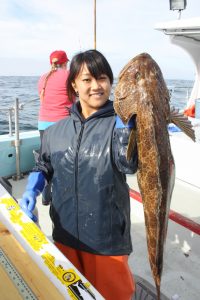
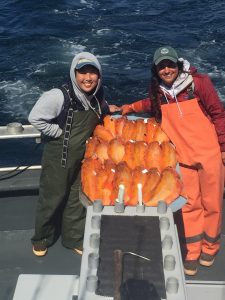 We are interested in understanding important life history traits, such as age distribution, reproduction, growth, and diet of marine organisms to ensure that resource managers have the necessary tools to ensure their proper management.
We are interested in understanding important life history traits, such as age distribution, reproduction, growth, and diet of marine organisms to ensure that resource managers have the necessary tools to ensure their proper management.
Currently, we are working on understanding geographic variation in the demography and life history of lingcod and canary rockfish to aid federal stock assessment efforts on the West Coast of the U.S. Past research has examined life history variability in rosy rockfish in response to fishing, spatial variation in Pacific geoduck clam life histories, and the effects of size-selective fishing on the demography and role of California sheephead in kelp forest ecosystems in southern California.
For our coral reef work, we have recently been collaborating with Dr. Stuart Sandin’s lab at the Scripps Institution of Oceanography to study the ecology of remote islands and atolls in the equatorial Pacific. Our recent work has been focused in the Northern Line Islands, where we have been able to study the fish assemblages across a gradient of human population, and in the Southern Line Islands, where we have been able to examine the influence of oceanographic variation in the absence of human influences. We are interested in understanding how life history traits, such as growth, trophic ecology, and morphology of both targeted and non-targeted species changes in response to these gradients.
Click here to learn more!
Community & Ecosystem Processes
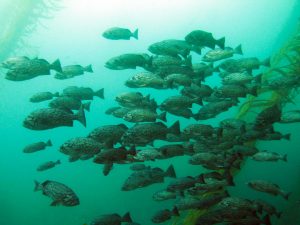 We are calculating the secondary community production from kelp forest fish assemblages along the California coast. Many studies have examined density or biomass and used these metrics as a proxy for production (the rate of biomass production per unit time), but these measures do not incorporate other important aspects of fish communities, including growth, recruitment, mortality, fecundity, etc. Community secondary production can thus infer much about an ecosystem, including its health.
We are calculating the secondary community production from kelp forest fish assemblages along the California coast. Many studies have examined density or biomass and used these metrics as a proxy for production (the rate of biomass production per unit time), but these measures do not incorporate other important aspects of fish communities, including growth, recruitment, mortality, fecundity, etc. Community secondary production can thus infer much about an ecosystem, including its health.
Additionally, we have recently started a project that is examining the role of fishes in nutrient cycling within local kelp forest ecosystems. We are asking questions about the rates of excretion of nitrogen (N) and phosphorous (P) by the whole fish community and how those nutrients are utilized to support the growth of habitat-forming kelps.
Click here to learn more!
Marine Reserve Research
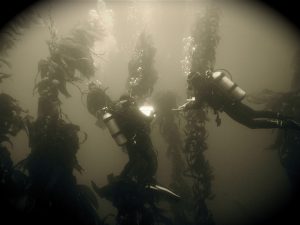 With a wealth of kelp forests found locally, we have been active in studying the ecology of these diverse and beautiful systems. Currently, we are studying predator-prey interactions inside and outside of local marine protected areas by comparing relative predation rates of invertebrate prey by predatory fishes. The goal of this study is to determine potential cascading effects that result from closing an area to fishing the large, predatory fish from the system.
With a wealth of kelp forests found locally, we have been active in studying the ecology of these diverse and beautiful systems. Currently, we are studying predator-prey interactions inside and outside of local marine protected areas by comparing relative predation rates of invertebrate prey by predatory fishes. The goal of this study is to determine potential cascading effects that result from closing an area to fishing the large, predatory fish from the system.
In addition, Dr. Hamilton has been working on evaluating the performance of the the Channel Islands MPA network for the past 10 years, starting as a post-doc working with Dr. Jennifer Caselle at UCSB. Our research documented dramatic increases in the density, size, and biomass of species targeted by fishing activities. This research was part of PISCO (the Partnership of Interdisciplinary Studies of Coastal Oceans).
Click here to learn more!
Aquaculture
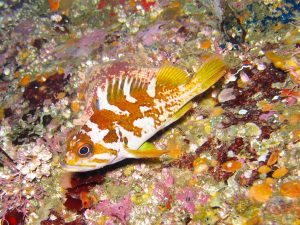 Moss Landing Marine Laboratories (MLML) broke ground on a new Aquaculture Facility in late 2014 to serve the California State University (CSU) system and we are developing a Center for Aquaculture with three pillars: (1) Research (partnering with industry to solve practical problems), (2) Education (training the future aquaculture workforce), and (3) Policy (addressing social and regulatory impediments).
Moss Landing Marine Laboratories (MLML) broke ground on a new Aquaculture Facility in late 2014 to serve the California State University (CSU) system and we are developing a Center for Aquaculture with three pillars: (1) Research (partnering with industry to solve practical problems), (2) Education (training the future aquaculture workforce), and (3) Policy (addressing social and regulatory impediments).
There is a great need to expand U.S. aquaculture production capacity through the development of new technologies and sustainable practices. California, due to its size and extensive coastline, has a great potential for supporting a vibrant aquaculture industry, yet the commercial sector, requisite workforce, and technical training base are chronically underdeveloped. The new Center for Aquaculture strives to address these issues.

